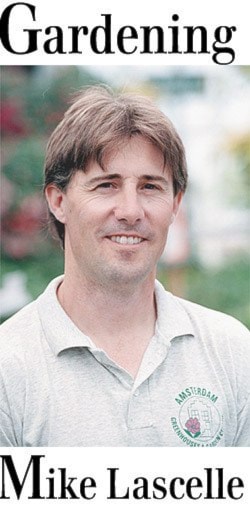The begonias have bombed, the zinnias are zapped, the lobelia lopsided, the alyssum annihilated, the geraniums garburated [sic], the nicotiana nullified … or to phrase this phenomena in the everyday vernacular … it’s been a really bad year for our summer flowers.
First they drowned in the seemingly endless rains and then when it finally did get sunny, the hot weather toasted their powdery-mildewed leaves to a crisp - leaving us with gaping black holes in our gardens that scream failure every time we walk by and envision what should have been.
In desperation, we go from garden centre to garden centre, trying to pick through the meagre remains of the season’s last annuals, in hopes of finding something to fill the empty space in both our hearts and landscape.
Then we see them, hundreds of beautiful yellow, orange, gold and bronze daisies – all in full glorious bloom. Then we ask that one question that turns most of us away from these late summer beauties: are they perennial?
The honest answer is no. Rudbeckia hirta or Gloriosa daisies are at best biennial or short-lived perennials that tend to rot out in our wet winters. If you have really good drainage and full sun in your garden, they may thrive for a few years but they will also usually self-seed themselves, so that you can enjoy the July to October blooms from year to year.
The trick is to deadhead the spent blossoms (to prolong the flowering season) while also leaving a few seedheads to mature. 
These drought-tolerant plants thrive in the late summer heat and there’s a variety to fill just about any hole in your garden – from the containers on the patio, to the tired perennial border, and even the failed summer flower bed by the front window.
Gloriosa daisies have been with us for so many years now, that some of the older favourites such as Becky, Rustic Dwarfs and Goldilocks can be a little hard to find.
That being said, there is a whole new generation of Rudbeckia hirta just waiting to be discovered, and while you are unlikely to find a complete selection at any given nursery, chances are you are going to stumble upon at least a few of the following at your local garden centre.
• Irish Eyes – Large single yellow blooms with prominent green centres on tall stems (70 cm) – a good background filler for mixed borders.
• Sonora – Unusual chocolate brown flowers with lemon yellow tips, surrounding black cones – this is a nice compact form (30-40 cm tall) for using in planters.
• Cherry Brandy – Introduced a few years ago with much fanfare, this cultivar features breakthrough colouring with its smaller burgundy blossoms, surrounding a brown eye. At only 50 cm tall, it works well as a solitary container specimen.
• Prairie Sun – Large single blooms of gold with lemon yellow tips and a green cone make this Gloriosa daisy stand out from the crowd. It is a tall form (80 cm), so it’s probably best used in the border.
• Cherokee Sunset – A mixed strain with large double flowers ranging from yellow, gold, orange and brown, with some bicolours. At 70 cm tall, it’s a great replacement for those failed dahlias.
• Toto Gold – Floriferous, compact plants with small single blooms of pure gold, surrounding a brown cone – all of the Toto series (including Rustic and Lemon) are your best choices to stuff into those late summer voids in our container gardens.
• Autumn Colors – The bicolour petals of this unusual variety come in a full range of autumn tones – including orange, bronze-red, gold and yellow. This mid-height (60 cm) cultivar is best used to flesh-out flagging perennial beds due to the diverse flower colours.
• Indian Summer – An award-winning strain with huge golden daisies, contrasting a dark brown cone - it is taller than most Gloriosa daisies (90cm) but that makes it a great cut flower or filler between medium-sized shrubs.
• Marmalade – Abundant golden-yellow single flowers that really stand out against the near-black cone – its modest height (60cm) and large blooms make it ideal for mass planting.
Mike Lascelle is a local nursery manager and gardening author. Email him at hebe_acer@hotmail.com.He has posted two new stories – A Bear on the Roof, and Something Worse on the Ground and Fear of Flying – to his blog at www.soulofagardener.wordpress.com.
